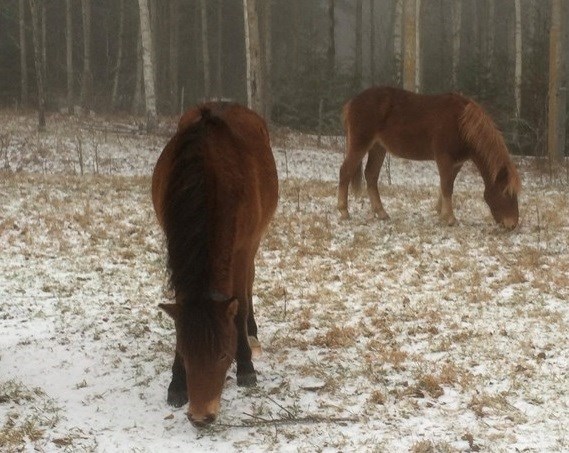Contact
Anna Jansson
Professor at the Department of Anatomy, Physiology and Biochemistry (AFB); Division of Anatomy and Physiology
Telephone: +4618672106
E-mail: anna.jansson@slu.se

Horse grazing may benefit biodiversity, but the impact of year-round grazing on nutrient dynamics has not been evaluated previously. This study compared pasture quality in a forest-grassland landscape grazed year-round by horses with that in exclosed mown areas.
Twelve Gotlandsruss stallions were kept without supplementary feeding in three enclosures (~0.35 horse/ha) outside Uppsala, Sweden, from May 2014 to September 2016. Each enclosure contained three mown exclosures, where grass sward samples were collected monthly and analyzed for chemical composition and vegetation density. Fecal grab samples were collected and analyzed for crude protein (CP) and organic matter (OM) content.
There were no differences in exclosure pasture energy or CP content between enclosures (p > 0.05). In grazed areas, there were differences in grass energy and CP content (p > 0.05) between enclosures. During the three summers studied, energy and CP content increased in the enclosures, but decreased in the exclosures. By the end, biomass content/ha was greater in the enclosures than in the exclosures. Fecal OM and CP content showed moderate to strong correlations with pasture nutrient content (r = 0.3–0.8, p < 0.05). Thus, in contrast to monthly mowing, horse grazing diversified pasture chemical composition and increased its nutritive value.
https://doi.org/10.3390/ani9080500
Sara Ringmark, Anna Skarin and Anna Jansson. Impact of Year-Round Grazing by Horses on Pasture Nutrient Dynamics and the Correlation with Pasture Nutrient Content and Fecal Nutrient Composition. Animals 2019, 9(8), 500
Anna Jansson
Professor at the Department of Anatomy, Physiology and Biochemistry (AFB); Division of Anatomy and Physiology
Telephone: +4618672106
E-mail: anna.jansson@slu.se